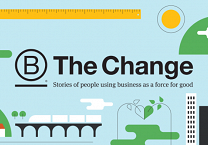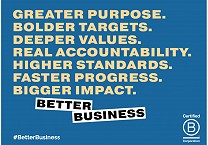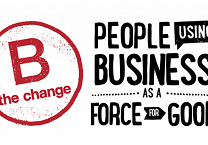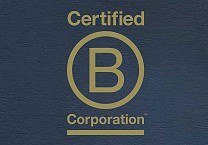Toxics Toolbox: A Crash Course on Chemical Management Software
by Robert L. Kerr
14 September 2015
Proactively adopting a sustainable chemicals management program is a company’s best response to ever-increasing requirements and demands from consumers, supply chain partners and regulators.
A key challenge for firms employing this approach is accessing the necessary chemical information. Software systems designed to meet this need can save resources, support improved chemical selection for the design of safer products and allow more rapid response to changing market demands for ingredients and materials.
Companies from Walmart and Seagate to Boeing and Halliburton have turned to software solutions to help them stay on top of chemicals management demands.
Strtegies focused on safer chemicals are critical components of proactive chemicals management. Enhancing ingredient and material safety involves several data-driven tactics, including:
- Prioritizing chemicals of concern for reduction or elimination;
- Understanding and improving the health and environmental profiles of ingredients;
- Verifying product composition; and
- Enhancing ingredient transparency and communication.
The level of chemicals information management this requires may be a new and significant challenge for many companies. It requires both strong leadership within the company and effective tools to manage the volume and complexity of transactions with suppliers, customers and product designers.
Pure Strategies reviewed the available tools and published a report on sustainable chemicals management software solutions provided by many leading vendors that are helping companies meet these challenges. We found that there are clear benefits for firms that use such tools, but the key is to find the right solution for each company’s needs.
Business Case for Sustainable Chemicals Management Software
Well-designed software and services can comprehensively track chemical ingredient information from incoming products/materials all the way through reformulation and incorporation into the products sold to a company’s customers. These software systems can also alert companies to potential violations of regulatory, customer or internal standards. Potential benefits include:
Increased efficiency and reduced costs
Sustainable chemicals management software reduces staff time otherwise required for chemical data tracking and facilitates communication with both suppliers and customers about chemical ingredients and restrictions.
Reduced risks
Ready access to information on chemical ingredients and restrictions can help to avoid fines for violations and liability for hazardous constituents in products.
Improved customer relationships
Companies can assure customers of compliance with chemical ingredient restrictions, and ensure rapid response to new regulatory or customer requirements.
Improved brand reputation with customers/consumers
Sustainable chemical software can improve brand reputation through facilitating safer chemicals in products and accurate ingredient disclosure for customers and/or consumers.
Competitive advantage
Such software provides product design teams access to essential information on requirements potentially affecting ingredient selection for new products, helping boost a competitive strategy.
Key Features of Sustainable Chemicals Management Software Tools
Sustainable chemicals management software helps managers organize, analyze and make decisions about chemicals and materials in their supply chains and products. Key software capabilities to support these decisions include:
- Inventorying chemical data
- Screening chemical ingredients against restricted substances lists (RSLs)
- Assessing chemical ingredients for inherent hazard characteristics
- Evaluating exposure potential
- Identifying less hazardous alternatives
Not all software tools include all of these components. We found that most tools provide robust chemical data inventorying and RSL screening capabilities, a good starting point for meeting the needs of many companies. However, additional features may be required to execute the company’s sustainable chemicals strategy and these should be considered in evaluating potential solutions. These include:
- Inventories of chemical data
- Screen chemical ingredients against RSLs
- Assess chemical ingredients for inherent hazards
- Assess exposure potential
- Identify less hazardous alternatives
- Scoring chemical products/ingredients on the basis of relative hazards and/or potential exposures
- Toolboxes of safer chemical alternatives for specific functions
A key benefit of adopting sustainable chemicals management software is automated inventory and management of chemical information (e.g., CAS numbers, percentages of ingredients of chemicals in products, and generation of information about data gaps). Some software vendors will also assist companies in filling data gaps by working with their suppliers to obtain missing information.
Software can readily compare a company’s inventory of materials/ingredients against lists of regulatory limits/reporting requirements or customer RSLs. Depending on the company’s sector or market, there may be a vast number of applicable regulatory and customer RSLs. Issues to explore with vendors include both the scope and number of regulatory and customer RSLs that are incorporated in the software (from a few to several hundred), and the frequency with which the lists are updated (as often as daily).
Companies that focus exclusively on regulatory lists of hazardous chemicals may inadvertently move to equally hazardous or more hazardous alternatives that aren’t yet on those lists (e.g., replacing bisphenol A (BPA) with bisphenol S (BPS) or bisphenol F (BPF) – neither of which is regulated, but which a reportreport on recent research concludes “may pose similar health hazards”). Among software tools that assess intrinsic chemical hazards, there is substantial variability in the breadth and depth of their offerings.
Only a few of the sustainable chemicals management software vendors provide assessments of potential consumer exposures to hazardous chemicals in consumer products. The contexts and scenarios for consumer exposures can sometimes be complex and uncertain. Vendors offering assessments of the extent and routes of exposure incorporate information that may include:
- Intrinsic physico-chemical characteristics of ingredients, such as volatility or solubility
- Life cycle and product factors, such as the phase of use and routes of exposure where a chemical may pose a health hazard.
- Exposure scenarios derived from public or proprietary databases and research.
The least common feature provided by software vendors is support in identifying safer alternatives - more sustainable chemical ingredients that can perform a needed function in a product. Some software tools provide analyses and services such as the following:
The Bottom Line: Criteria for Selecting Sustainable Chemicals Management Software
Because of differing company needs and resources, there is no one-size-fits-all ideal software system for all companies. In order to evaluate the varied options offered by the vendors and choose the best solution, a company needs to (see Figure 2):
- Set goals: Carefully evaluate expected benefits from utilizing software tools in order to align needs and selection
- Establish requirements: Clarify chemicals management software requirements, as well as resource availability/ limitations for investment in a software system.
- Make selection: Review the vendors’ service summaries in the Pure Strategies report, explore the vendor websites, then contact the vendors that appear most likely to meet company needs.
Identify vendors whose sustainable chemicals management software most closely aligns with company requirements, and whose approach allows the company to pay only for the services it needs.
Sustainable chemicals management software offers companies a way to gain more control over the chemicals used and stay ahead of changing requirements while increasing efficiency and strengthening relationships with suppliers and customers. As more companies employ powerful tools that allow them to develop sophisticated chemicals management programs, the companies that lack these initiatives risk having their poor understanding of their own ingredients exposed while also lagging their peers in transitioning to the safer ingredients consumers are demanding.
For more detail on any of the topics discussed here, as well as for vendor summaries, please see the full Pure Strategies report. This article first appeared in GreenBiz.
Written by Robert L. Kerr
Bob Kerr is Co-founder and Principal of Pure Strategies, Inc. During the last three decades, he has advised businesses, agencies and non-profit groups on approaches to accelerating environmentally and socially sustainable products, services and programs. Recent work includes support for the multi-stakeholder, safer-chemical initiatives of the Green Chemistry and Commerce Council and for company supply-chain sustainability assessments and initiatives. An expert in chemicals management, Bob authored Sustainable Chemicals Management Software: A Pure Strategies Review of Tools for Managing Chemicals in Products.












